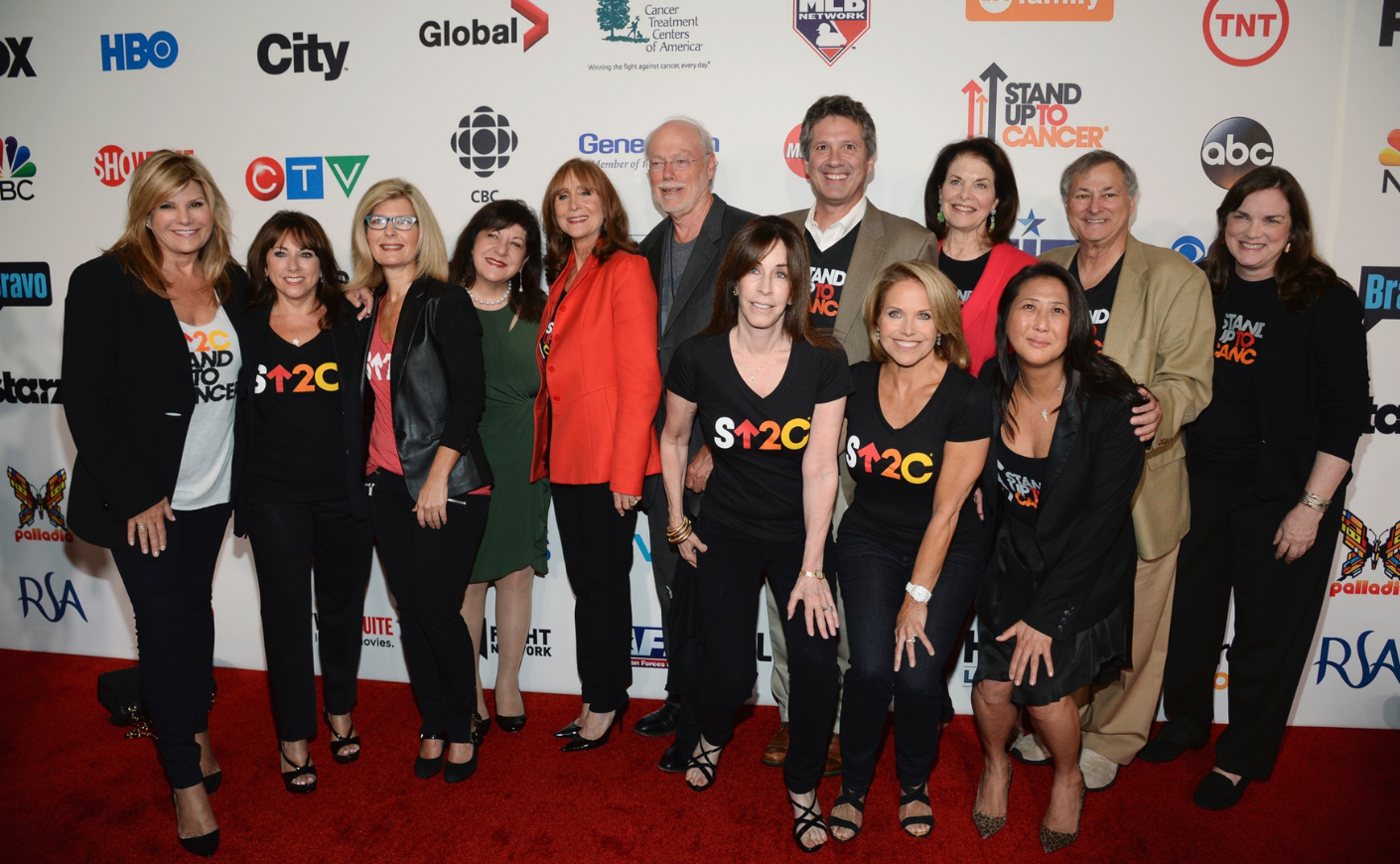More than 1,600 Americans die of cancer every day. Close your eyes and think about that. As you say a prayer to those who are dying, even as you’re reading these words, contemplate the broken hearts left behind. Nearly 2 million Americans are diagnosed with cancer every year, and because of the pandemic, scores of cases that might have been detected early — when treatment is most effective — have been missed. With so much happening in the world, it’s perhaps hard to focus on cancer. But on August 19, at 8 p.m. ET/7 Central, I hope you’ll take a moment to join me as we Stand Up To Cancer.
What is SU2C? Here’s a bit about our journey. In 2007, nine Type A women who had seen the ravages of cancer firsthand decided to join forces. We were frustrated. Many of us had lost loved ones; my husband Jay died of colon cancer in 1998, and my sister Emily lost her battle with pancreatic cancer in 2001. Others, like Hollywood producer Laura Ziskin, were fighting the disease — in her case, breast cancer, which took her life in 2011. There’s a former studio head, Sherry Lansing, and marketing whizzes, non-profit experts, and PR mavens in the mix. We knew it wouldn’t be easy, starting from scratch, but we just didn’t see the current paradigm of cancer research working well enough or fast enough for all the patients desperate for science to deliver answers.
Our model focuses on collaboration, not competition. We thought too many scientists were working in silos, often duplicating each other’s work. Not sharing their brainpower, creativity and even tissue samples just didn’t make sense to us. What if they worked together? If two heads are better than one, wouldn’t 10 heads be even better than two?
At first, some people thought it was crazy — particularly scientists, who were understandably concerned about disrupting the status quo. But my favorite story is of two initially skeptical cancer researchers, who now take family vacations together.
Turns out, working relationships have blossomed, friendships have formed, and science has been the beneficiary: The bonds developed among scientists and other fantastic research organizations have led to nine new FDA-approved cancer-fighting drugs. But we’re not stopping there.
New ways of attacking cancer — immunotherapy, which bolsters the immune system to fight the disease; targeted therapies; epigenetics (and all kinds of other approaches that are showing promise) are giving a massive injection of hope into the cancer-fighting community. Technology is allowing us to use data to determine the effectiveness of therapies on individual patients and wide swaths of the population. I’m still optimistic that Laura Ziskin’s early mantra for our very first telecast — “This is where the end of cancer begins” — holds true. But we have to keep going.
This is an opportunity to express my appreciation to all the people, organizations, and companies that have supported our efforts in the 15 years since SU2C’s 2008 launch. We’re hoping it’s a lucky number for everyone who is depending on new breakthroughs. Please, watch the show tonight — it’s on all four major networks, and over 65 broadcast and streaming channels across the U.S. and Canada. And 100 percent of donations go to research. You know what they say: No amount is too small! And if you want to learn more about what you can do to support our efforts and stay connected to the progress we’re making, visit the Stand Up to Cancer website. Who knows? This critically important research may someday save your life — or the life of someone you love.









